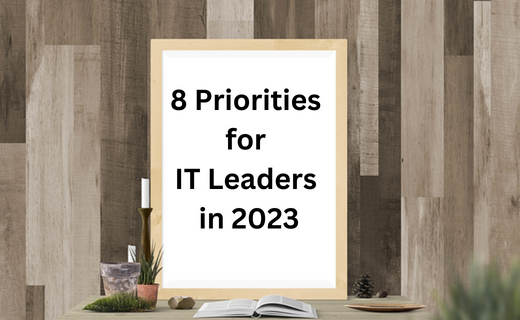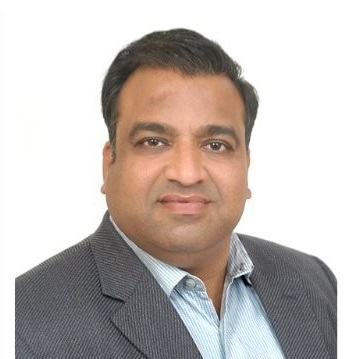-

8 Priorities for IT Leaders in 2023
As the new year arrives, IT leaders face a challenging to-do list as they strive to maximize IT productivity and efficiency in increasingly unpredictable times. The focus of the IT industry has changed from optimizing time to market to operating with greater cost control. The margin of error is decreasing amid looming economic uncertainty.
Responding to both old and new challenges, IT leaders must reassess their business and technology strategies, realigning them to address rapidly evolving business and economic concerns. The following eight priorities are gaining the most attention.
Building Resilience
Resilience will be a top priority for many IT leaders this year as they face a possible recession and ongoing labor shortages. Critical IT skills, especially in cybersecurity, artificial intelligence, and machine learning, have long been in short supply, and the current labor shortage is intensifying the need for such professionals.
“Technology will play a pivotal role in building resiliency since it’s entrenched in every aspect and rung of an enterprise. Building resiliency with technology will enable a CIO to think beyond their team and help them address this challenge for the company. Having the right technology can create a ripple effect, empowering employees, which enables satisfaction and a superior experience.”, says Peter Kirkwood, principal consultant at Zinnov.
Improving Business Alignment
Business intimacy enables IT leaders to increase their relevance, enhancing their ability to deliver business value. IT leaders can improve business intimacy by bringing new skills and operating processes to the executive table.
IT leaders should begin the process by fully understanding the priorities, pain points, operations, investments, and technologies their colleagues are using. Increasing business alignment while driving efficiency and productivity with automation and AI tools are essential goals in any economic environment.
“IT leaders must be aware of everything that’s taking place across sales, service, marketing, commerce, IT, HR, finance, and more,” says Juan Perez, CIO and executive vice president at Salesforce.
Rationalizing Technology Estate
Over the past decade, enterprises have rapidly added powerful technology and cloud-based services to their portfolios. At the same time, they have been much less likely to retire the legacy systems these new tools were meant to replace, creating a complex web of redundant applications and systems, warns VMware CIO Jason Conyard.
There’s an industry-wide push to reduce technical and data debt and reallocate those resources toward building the future, Conyard says. “IT leaders will be looking to rationalize their technology estate to reduce unnecessary cost and maintenance and to minimize their security attack surface and privacy exposure.”
Aligning Business Goals
There must be open, transparent, and collaborative working sessions to create alignment on how businesses can deploy technology capabilities to meet enterprise goals, states Bill Cassidy, CIO at New York Life Insurance. “All participants need to demonstrate strong communication skills, including effective listening, to properly weigh the pros, cons, and tradeoffs of one path of execution versus another,” he adds.
Cassidy notes that when working with colleagues, it’s important to “keep a thoughtful end-state in mind” before adding or changing technology ecosystem elements. “Achieving this clear end-state vision requires deep and successful business and technology alignment,” he says.
Monetizing Data Insights
According to Dan Krantz, CIO of electronics test and measurement equipment manufacturer Keysight Technologies, organizations that can successfully act on their data insights will thrive. To achieve this goal, “IT leaders need to treat the assessment and analysis of data as a scientific discipline,” he advises.
“From a people perspective, analytical and quantitative skills are now more pressing than software engineering skills,” Krantz states. Krantz suggests that IT leaders seek Ph.D.-level talent while embracing the latest data mining, data analysis, and analytical tools. He believes IT leaders should create solutions featuring low-code extensibility, an intuitive user experience and abundant APIs.
Krantz warns that IT leaders who fail to embrace scientifically-obtained data insights will remain mired in an Excel wormhole. “The negative financial and competitive consequences … will be difficult to escape,” he says.
Embracing Digital Transformation
IT leaders must continue driving enterprise digital transformation in 2023, says Elizabeth Hackenson, CIO and senior vice president at energy management and automation firm Schneider Electric.
“At Schneider Electric, we’re focused on transforming our sales tracking processes as well as HR,” Hackenson says. “It’s about being a partner in the business, moving toward greater resiliency, sustainability, and customer value through the adoption of simplified, modern CRM, ERP, and HR systems.”
Hackenson believes that her organization’s cloud transition, combined with advanced digital technologies, will lead the firm to a new generation of intelligent cybersecurity factories and distribution centers.
Hackenson believes efficiency is the key to a resilient, future-ready supply chain. “Digitization is also essential for achieving sustainability goals across business operations,” she says. She notes that the key to success is maintaining a close partnership and alignment with all business functions and placing customers and employees at the heart of every digital transformation effort. “It’s also essential to find the right partners who share an agile mindset and commitment to sustainable change.”
Modernizing Cybersecurity
To defend against emerging cyber threats in 2023 and beyond, IT leaders should consider increasing their investments in IT modernization, says Phil Venables, CISO of Google Cloud.
The increased malicious activity observed in 2022 is no surprise and will only continue to grow in 2023, Venables predicts. “Cyberattacks aimed at a company’s networks can have severe consequences, ranging from financial losses or liability to eroding an organization’s reputation.”
In a modern IT environment, security should be a built-in infrastructure element, not an add-on. “Even with short-term challenges, the long-term benefits of IT modernization are paramount and key to mitigating evolving cyber threats,” Venables explains.
Venables believes legacy IT presents a significant challenge to security teams. “It’s important to recognize that governments and enterprises cannot modernize their security without modernizing their infrastructure and software development practices first,” he says. “Without a continued focus and investment in IT modernization, organizations will not be able to realize the full benefits of the advances in security.”
Optimizing Costs and Usage of Resources
A top priority in 2023 should be leveraging technologies that will allow the enterprise to move faster and nimbler, says Nicolas Avila, CTO for North America at software development firm Globant. The challenge is finding ways to achieve these goals in an era of constricted budgets.
Across industries, companies are slashing their budgets, Avila notes. While IT is generally not as affected as many other sectors, given technology’s importance in maintaining competitive success, IT leaders still need to get more done within a budget that may not allow all goals to be achieved.
Avila believes there will be a significant focus on cost optimization via technology in 2023. “Not only will this allow enterprises to save limited resources, but it will also enable them to redefine business processes to make work less complicated and more in line with what the labor market will be,” he says.
The key to surviving in the year ahead, Avila says, will be to become lean without losing essential capabilities, enabling the enterprise to rebound faster and stronger from the economic shakedown that many observers see coming in 2023. “The reality is that the world is continuing to move faster and faster, and IT leaders need to lead the way in making sure their enterprise can match that pace, from customer experience to operations to employee engagement,” he says.
At ExpertTal, we believe in staying updated with all the latest trends and news from the IT industry. We help companies build remote engineering teams by providing world-class software development professionals just right for your next project. Contact us today to see how we can help you!
Follow us on LinkedInAbout the Author

Kamal Rastogi is a serial IT entrepreneur with 25 yrs plus experience. Currently his focus area is Data Science business, ERP Consulting, IT Staffing and Experttal.com (Fastest growing US based platform to hire verified / Risk Compliant Expert IT resources from talent rich countries like India, Romania, Philippines etc...directly). His firms service clients like KPMG, Deloitte, EnY, Samsung, Wipro, NCR Corporation etc in India and USA.